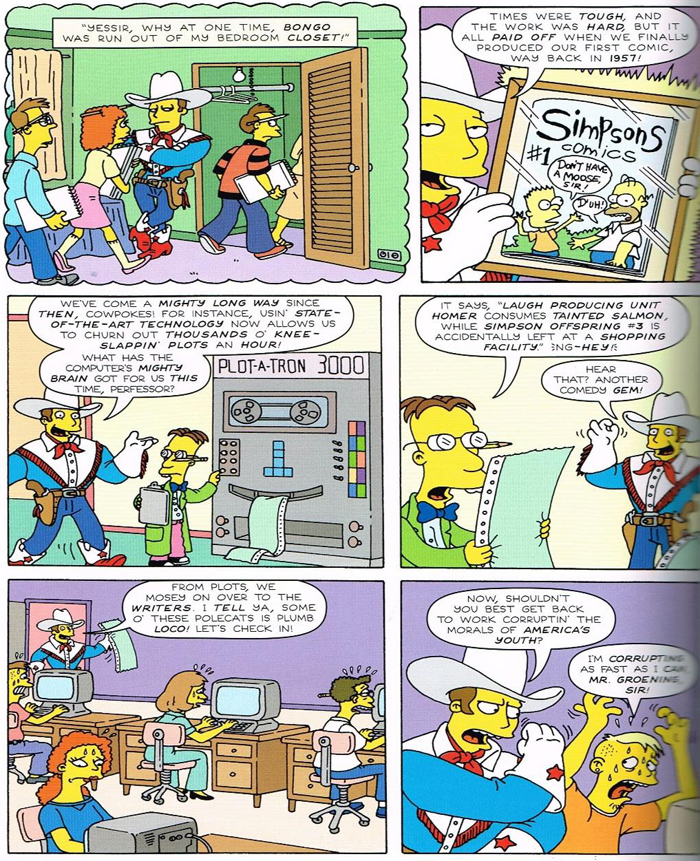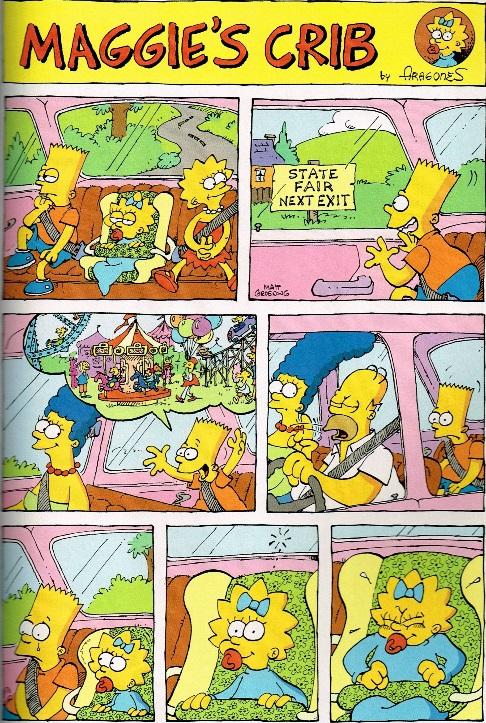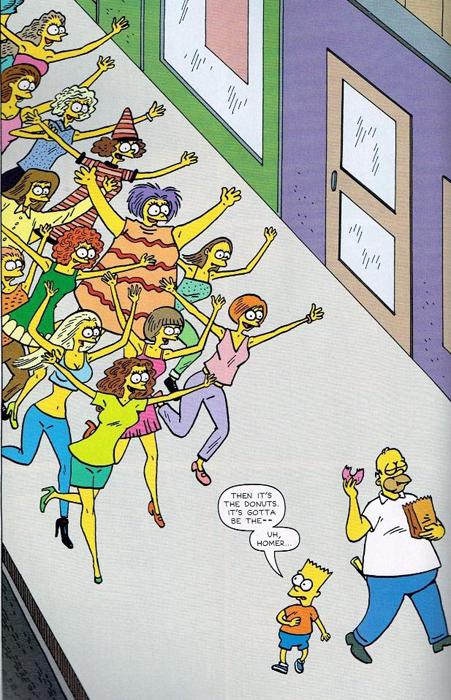By Tom Speelman
The Simpsons is a strange beast. Once hailed as the finest satire in American television history and condemned by a sitting U.S. president, it’s now an omnipresent force. I’m 22 now, born three years after the series debuted in 1989; I’ve literally never known a world without The Simpsons.
Befitting creator Matt Groening’s cartoonist roots, comics are a big part of the Simpsons empire. Specifically Bongo Comics, the publishing company founded by Groening, Bill Morrison, and Steve and Cindy Vance in 1993 to publish several Simpsons-related comics as well as Futurama Comics (which publishes 5 issues a year). The company also currently distributes Spongebob Comics (which have a similar artistic pedigree, but that’s a different article).
While Morrison has always been heavily involved with the company as a penciller, writer, and group editor (a position held by Nathan Kane since 2012) and Steve Vance did the same in the early issues, a wide variety of famous comics names have stopped in Springfield over the years. Some names—like Gail Simone, Gilbert Hernandez and Sergio Aragonés—might be surprising.
 Actually, working for Bongo was Simone’s first regular comics work. Her Comic Book Resources humor column You’ll All Be Sorry! led to Bongo staff offering her writing jobs. During her tenure, she penned stories for Simpsons Comics (the company’s flagship title), Bart Simpson, and a Treehouse of Horror special. My favorite of the ones I’ve read of hers so far is the wacky “…Inside Bongo Comics!” which sees Matt Groening, a tall, muscular cowboy, take the reader through the Bongo Comics Group work process—including a room full of writers featuring a Simpson-ized Simone.
Actually, working for Bongo was Simone’s first regular comics work. Her Comic Book Resources humor column You’ll All Be Sorry! led to Bongo staff offering her writing jobs. During her tenure, she penned stories for Simpsons Comics (the company’s flagship title), Bart Simpson, and a Treehouse of Horror special. My favorite of the ones I’ve read of hers so far is the wacky “…Inside Bongo Comics!” which sees Matt Groening, a tall, muscular cowboy, take the reader through the Bongo Comics Group work process—including a room full of writers featuring a Simpson-ized Simone.
It’s very fun to see the great Hernandez’s distinct take on the people of Springfield. His story, “Homer Simpson: Chick Magnet” from Bart Simpson #52 where Homer & Bart inadvertently learn that rolling up a comic book and putting it in one’s back pocket has a certain charm with the opposite sex. Hernandez gives Homer a bizarre height that helps sell the idea that this is a story from Bart’s perspective, as well as drawing a recognizably Simpsons look with a visually noticeable slant.
Many Simpsons comics deal with the nature of the medium. Also in Bart Simpson #52, famed cartoonist Carol Lay writes and draws a fun tale in which Comic Book Guy tasks Bart with creating a list of definitive comic book sound effects (“And if it doesn’t include the greatest sound effect ever, Kraka-Thoom!, it is not definitive”). It’s as meta as a Deadpool story but with no outright zaniness. Which is a good thing.
There’s also a lot of nods to comics history. Recently reprinted in Simpsons Illustrated #16, the story “Mr. Burn$,” written by Ian Boothby—a Canadian comedian who’s written more Simpsons comics than anyone—is a loving send-up of Carl Barks’ Scrooge McDuck adventures, with Burns conscripting Homer and the kids on a treasure hunt, encountering places like “Island of Donrosa” and “The Gottfredson Trench” that any Disney comics diehard will grin at.
 I began picking up Bart Simpson in 2010 when the bimonthly title added legendary MAD cartoonist Aragonés on its staff (although he’s since left). Aragonés is a comedic genius, and his “Maggie’s Crib” strips—wordless tales of the youngest Simpson—are delightful. It’s perfect silent comedy told in Aragonés’ signature vibrant style that, like his famous MAD doodles, have a whole lot of background detail that reward rereads.
I began picking up Bart Simpson in 2010 when the bimonthly title added legendary MAD cartoonist Aragonés on its staff (although he’s since left). Aragonés is a comedic genius, and his “Maggie’s Crib” strips—wordless tales of the youngest Simpson—are delightful. It’s perfect silent comedy told in Aragonés’ signature vibrant style that, like his famous MAD doodles, have a whole lot of background detail that reward rereads.
So the next time you’re at your local comic shop and you see a cover with Homer or Bart on it, give it a look. Even if you don’t watch The Simpsons anymore, you’ll still find some great comics.
Tom Speelman has written for The Mary Sue, Strange Horizons, Comics Alliance and other websites. You can find him yelling about comics and music @tomtificate on Twitter and view his recent work on about.me.


